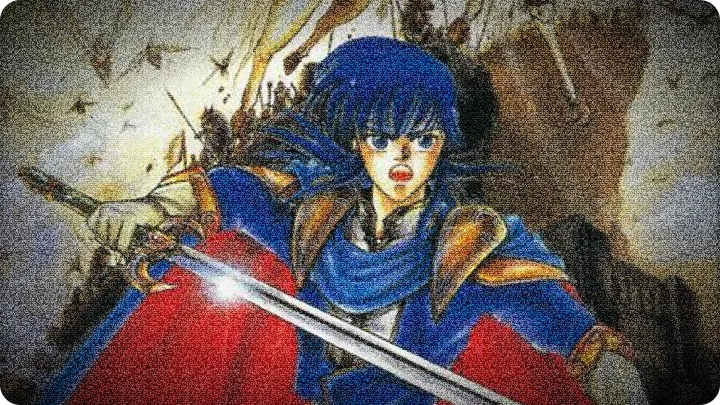 We sit cross-legged on the floor with the CRT humming. Cartridges are warm, controllers sticky with the season’s sweat, and the manual rests like a folded relic. Quick fun fact before we dive in: Fire Emblem: Seisen no Keifu was created by Intelligent Systems with Shouzou Kaga supervising, and published by Nintendo. This team pushed the Super Famicom to its limits in 1996. They packed a two-generation narrative and enormous battle maps into a cartridge just as the industry whispered about 32-bit machines. The ambition shows in every frame.
We sit cross-legged on the floor with the CRT humming. Cartridges are warm, controllers sticky with the season’s sweat, and the manual rests like a folded relic. Quick fun fact before we dive in: Fire Emblem: Seisen no Keifu was created by Intelligent Systems with Shouzou Kaga supervising, and published by Nintendo. This team pushed the Super Famicom to its limits in 1996. They packed a two-generation narrative and enormous battle maps into a cartridge just as the industry whispered about 32-bit machines. The ambition shows in every frame.
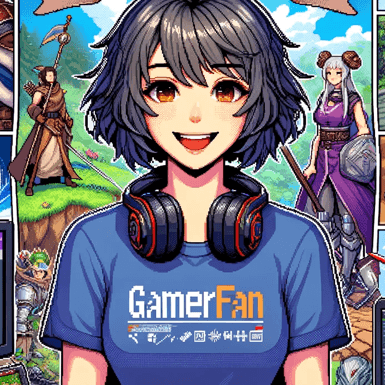 I can feel the map loading — that familiar turn-based click. Playing it now feels like unfolding a novella in pixel form. The layout of Jugdral feels lived-in; the way the first five chapters let you play Sigurd and then hand the reins to his son (Celis, in this translation) is still audacious. The story choices cascade. Your mistakes in the first generation echo in the second, and that design decision is what keeps me invested.
I can feel the map loading — that familiar turn-based click. Playing it now feels like unfolding a novella in pixel form. The layout of Jugdral feels lived-in; the way the first five chapters let you play Sigurd and then hand the reins to his son (Celis, in this translation) is still audacious. The story choices cascade. Your mistakes in the first generation echo in the second, and that design decision is what keeps me invested.
 Gameplay first — it retains the series’ tactical core but tightens things with a level-based promotion system. No weapon-class promotions, just reach the level requirement and your unit steps up. That simplicity pairs well with new wrinkles: the weapons triangle (sword beats axe, spear beats sword, axe beats spear) feels intuitive and actually meaningful on the large maps, and status effects — sleep, silence, seal — force you to think beyond pure damage numbers.
Gameplay first — it retains the series’ tactical core but tightens things with a level-based promotion system. No weapon-class promotions, just reach the level requirement and your unit steps up. That simplicity pairs well with new wrinkles: the weapons triangle (sword beats axe, spear beats sword, axe beats spear) feels intuitive and actually meaningful on the large maps, and status effects — sleep, silence, seal — force you to think beyond pure damage numbers.
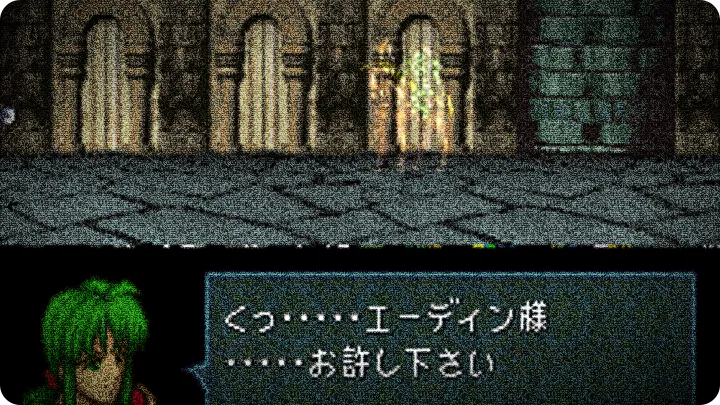
 The maps are gargantuan compared to earlier entries. They give space to maneuver cavalry columns, set up choke points, and stage rescue missions that feel cinematic. The introduction of units like the Troubadour and Falcon Knight adds tactical depth. Troubadours can save a downed friend’s life mid-battle at the cost of their own tempo, and Falcon Knights let you exploit terrain and reach to pick off archers. You learn to respect each unit’s niche quickly.
The maps are gargantuan compared to earlier entries. They give space to maneuver cavalry columns, set up choke points, and stage rescue missions that feel cinematic. The introduction of units like the Troubadour and Falcon Knight adds tactical depth. Troubadours can save a downed friend’s life mid-battle at the cost of their own tempo, and Falcon Knights let you exploit terrain and reach to pick off archers. You learn to respect each unit’s niche quickly.
 Now for the candid part — the game’s ambition sometimes works against it. Save points are fewer than I’d prefer for maps this size, and the grind to get some characters to promotion levels can feel like deliberate tedium when you are mid-map and low on reliable healers. The difficulty spikes at chapter transitions can be jarring; the early generation is merciless in ways that feel legendary rather than elegant.
Now for the candid part — the game’s ambition sometimes works against it. Save points are fewer than I’d prefer for maps this size, and the grind to get some characters to promotion levels can feel like deliberate tedium when you are mid-map and low on reliable healers. The difficulty spikes at chapter transitions can be jarring; the early generation is merciless in ways that feel legendary rather than elegant.
 Exactly. The balance is uneven. Some characters scale beautifully into the second generation if you invest in them, while others drop off in utility unless you micro-manage their growths. That inheritance system — equipment and bloodlines matter — is brilliant for long-term planning, but unforgiving when a careless turn loses a cherished unit. It makes every decision weighty, which is fantastic for drama and infuriating when you misclick.
Exactly. The balance is uneven. Some characters scale beautifully into the second generation if you invest in them, while others drop off in utility unless you micro-manage their growths. That inheritance system — equipment and bloodlines matter — is brilliant for long-term planning, but unforgiving when a careless turn loses a cherished unit. It makes every decision weighty, which is fantastic for drama and infuriating when you misclick.
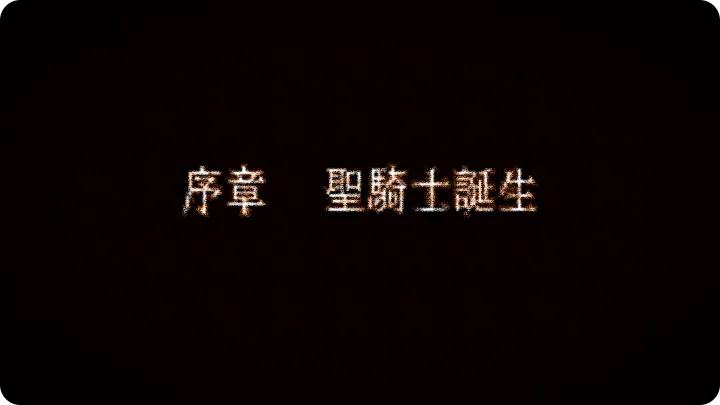
 Let’s give players something practical. Hot Tips:
Let’s give players something practical. Hot Tips:
- Prioritize troubadours and healers for mid-map mobility — losing a healer in late-game engagements is brutal.
- Exploit the weapons triangle aggressively; a single spear can undo a whole line of swordsmen if positioned well.
- On the larger maps, bait reinforcements with one squad and funnel them into arc-shaped kill zones.
- Plan for inheritance: who carries what weapon and who will inherit it matters more than you think. Keep proven lances and swords in families you want to thrive in generation two.
- Do not ignore status effects — a silenced mage is a mute victory on a tight map.
 Memorable moments are abundant. One that sticks out is rescuing a clutch unit from a flanking cavalry charge with a last-second swap and counter. The map design allowed for that kind of theater: it felt like editing a movie live. The music swells at the right times, and even though the sprite frames are few, enemy variety and animations during special attacks sell the stakes.
Memorable moments are abundant. One that sticks out is rescuing a clutch unit from a flanking cavalry charge with a last-second swap and counter. The map design allowed for that kind of theater: it felt like editing a movie live. The music swells at the right times, and even though the sprite frames are few, enemy variety and animations during special attacks sell the stakes.
 Another unforgettable scene is the mid-game betrayal sequence that reframes everything; it is a masterclass in using gameplay to narrate tragedy. Your earlier decisions — alliances, who you promoted, what weapons you hoarded — land like punches. And the final confrontation is suitably dramatic: it is staged on a sprawling arena where generations of your choices collide. Reinforcements, weather, and status effects all conspire in the finale, and losing a promoted hero there is heartbreak with echoes.
Another unforgettable scene is the mid-game betrayal sequence that reframes everything; it is a masterclass in using gameplay to narrate tragedy. Your earlier decisions — alliances, who you promoted, what weapons you hoarded — land like punches. And the final confrontation is suitably dramatic: it is staged on a sprawling arena where generations of your choices collide. Reinforcements, weather, and status effects all conspire in the finale, and losing a promoted hero there is heartbreak with echoes.
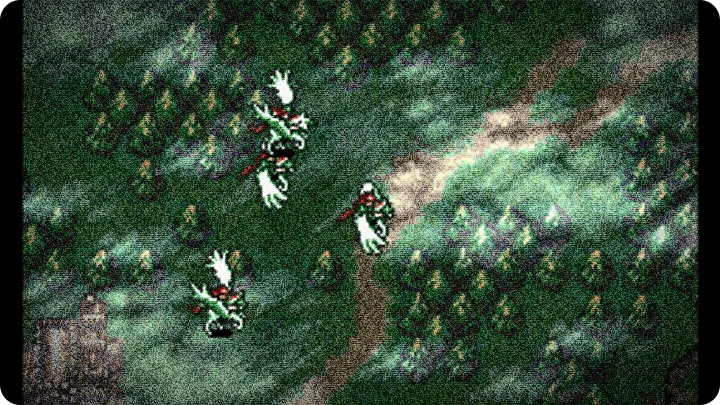
 The final boss encounter rewards careful planning and patience. It is not a muscle-flex; it is a chess problem with moving pieces and long-term consequences. There is a moment when the enemy’s script reveals the full scope of the antagonist’s reach — your family’s scars, political betrayals, and the mythic elements all align. It is satisfying when your inheritance plan pays off and a child of a fallen hero turns the tide.
The final boss encounter rewards careful planning and patience. It is not a muscle-flex; it is a chess problem with moving pieces and long-term consequences. There is a moment when the enemy’s script reveals the full scope of the antagonist’s reach — your family’s scars, political betrayals, and the mythic elements all align. It is satisfying when your inheritance plan pays off and a child of a fallen hero turns the tide.
 If I had to be frank: the pacing can drag when you are between major beats, and some UI conventions feel archaic even for 1996 — inventory management on large maps needs more polish. But the payoff for patience is immense. The plot beats, coupled with the strategic depth, create a tapestry that is rare for cartridge-era design.
If I had to be frank: the pacing can drag when you are between major beats, and some UI conventions feel archaic even for 1996 — inventory management on large maps needs more polish. But the payoff for patience is immense. The plot beats, coupled with the strategic depth, create a tapestry that is rare for cartridge-era design.
 For anyone playing this on a long rainy evening, bring patience and a notebook. Track inheritances, mark units destined for promotion, and save often enough to avoid the single-misclick despair. When it clicks, though — when your cavalry shreds an axis of enemies because you trained them in generation one — the reward is profound. It is a game that respects the time you invest in it.
For anyone playing this on a long rainy evening, bring patience and a notebook. Track inheritances, mark units destined for promotion, and save often enough to avoid the single-misclick despair. When it clicks, though — when your cavalry shreds an axis of enemies because you trained them in generation one — the reward is profound. It is a game that respects the time you invest in it.
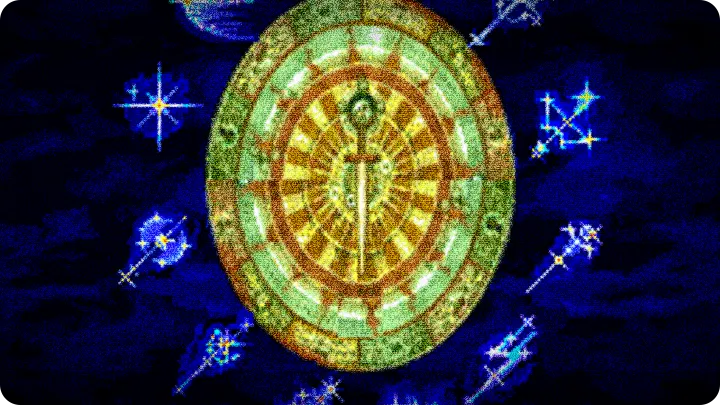
 We are approaching the next chapter. Controllers in hand, CRT glow in our faces, and despite a few rough edges, Seisen no Keifu remains an ambitious, often brilliant strategy epic. It asks for dedication, and in return it offers narrative weight, battlefield spectacle, and a legacy of design that still influences the genre. Ready to finish this last skirmish?
We are approaching the next chapter. Controllers in hand, CRT glow in our faces, and despite a few rough edges, Seisen no Keifu remains an ambitious, often brilliant strategy epic. It asks for dedication, and in return it offers narrative weight, battlefield spectacle, and a legacy of design that still influences the genre. Ready to finish this last skirmish?
 Always. Insert another coin of patience, and let the inheritance of legends decide our fate.
Always. Insert another coin of patience, and let the inheritance of legends decide our fate.
more info and data about Fire Emblem: Seisen no Keifu provided by mobyGames.com

